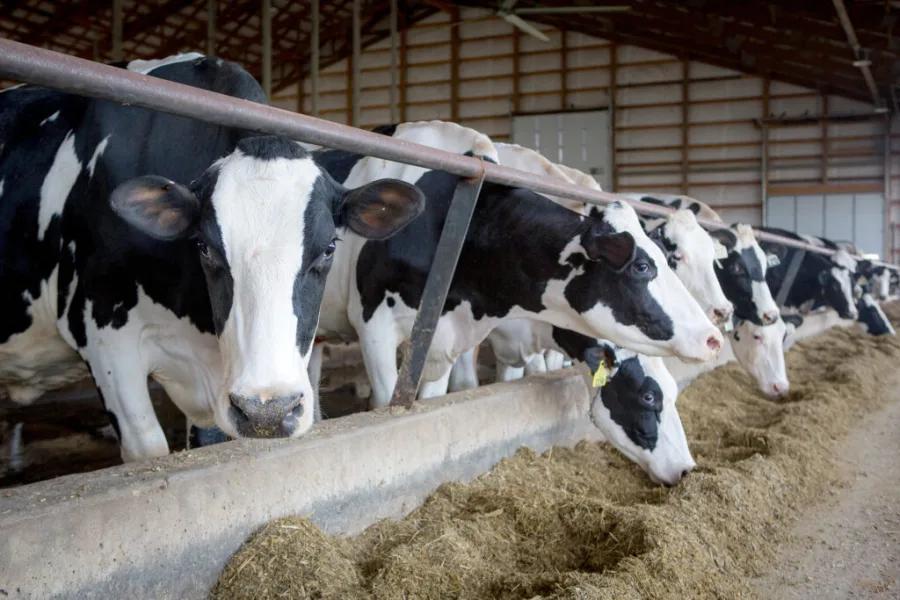Bird flu hits Iowa dairy herd, sparking biosecurity alert. How will this impact milk production and safety? Learn about the latest measures to protect livestock.

The recent bird flu outbreak has not just reached, but has significantly impacted Iowa’s dairy industry, necessitating immediate and decisive action. With bird flu already confirmed in over 80 herds nationwide, the severity of the situation is underscored by Iowa’s affected dairy herd. In this report, we aim to delve into the outbreak’s details, the areas it has affected, and the preventive steps being taken to protect dairy cattle and poultry. Our goal is to present a clear understanding of the outbreak’s profound impact on the dairy industry and the urgent measures in place to contain it.
Urgent Call to Action
“Poultry producers and dairy farmers, your immediate action is crucial. Harden your biosecurity defenses, limit unnecessary visitors, and report symptomatic birds or cattle to the department,” emphasized Mike Naig, Iowa’s agriculture secretary. Your vigilance and adherence to these measures are key to preventing further spread and protecting our industry.
The bird flu outbreak is spreading rapidly. Since late March, over 80 herds have been infected across the U.S. Three dairy workers have also tested positive, highlighting the potential human health risks and urging caution in the farming community.
The Impact on Iowa
Iowa is vital to the industry as the tenth-biggest milk producer. The recent bird flu case in an Iowa dairy herd is alarming. It’s the first new case since Colorado in April, suggesting the virus’s spread. This underscores the need for stringent biosecurity measures to protect dairy cows and poultry in Iowa.
USDA’s Preventive Measures
On April 26, the U.S. Department of Agriculture (USDA) started requiring lactating cows to test negative for bird flu before crossing state lines. This move responded to the rising number of infections and aimed to catch and isolate infected animals early.
This measure has proven to be highly effective. The USDA reported that it likely helped prevent the virus from spreading to states without cases in their dairy herds. This containment strategy has successfully halted the spread, giving states the necessary time to strengthen their biosecurity measures. Rest assured, these measures are protecting the dairy industry from potential disruptions.
By requiring negative tests for lactating cows before interstate travel, the USDA minimized the risk of cross-state contamination and showed a solid commitment to safeguarding the nation’s dairy sector from bird flu.
Iowa’s Response and Biosecurity Measures
Iowa’s agriculture department is implementing more robust biosecurity measures to protect dairy cows and poultry flocks from bird flu. This means more surveillance and frequent testing of herds and flocks. Farmers should practice rigorous sanitation, such as disinfecting equipment and vehicles that enter the farm. Also, farm access will be strictly controlled, allowing only essential personnel to reduce cross-contamination risks.
The department also prioritizes education, ensuring farmers and workers know how to spot symptoms and what steps to take if they suspect an infection. Regular communication has been set up between state officials and farm operators to keep everyone informed, offering timely updates and advice. Iowa also plans contingency plans for quick isolation and containment of new bird flu outbreaks to prevent further spread.
With these comprehensive biosecurity defenses, Iowa aims to protect its valuable agricultural assets and maintain the health and productivity of its dairy and poultry industries.
“Poultry producers and dairy farmers should immediately take steps to harden their biosecurity defenses, limit unnecessary visitors, and report symptomatic birds or cattle to the department,” advised Mike Naig, IIowa’s agriculture secretary.
Genomic Sequencing: A Key to Understanding
The USDA confirmed that poultry farms in at least five states were infected with the H5N1 virus, also found in dairy cattle.
Understanding the spread of bird flu in Iowa is crucial, and genomic sequencing plays a key role. Genomic sequencing is a process that [simplified explanation of genomic sequencing]. The virus found in a commercial farm with egg-laying chickens matches the variant detected in dairy cattle in other states, indicating a potential common source or similar transmission pathways. Iowa officials are also sequencing the DNA of the virus found in a recently infected turkey flock and the affected dairy herd. These efforts help map the virus’s evolution and transmission, effectively controlling future outbreaks.
The Bottom Line
The spread of bird flu to Iowa’s Dairy herds marks a critical point in the ongoing outbreak. The USDA’s preventive measures like mandatory testing of lactating cows, have helped contain the virus so far. Yet, the recent infection in Iowa highlights the ongoing risk and the need for strong biosecurity. Iowa’s agriculture department is taking immediate steps to protect its dairy cows and poultry. Genomic sequencing plays a vital role, helping track the virus and guide targeted actions. Stay informed and prepared to help mitigate the spread of this persistent threat.
Key Takeaways:
- Iowa reported its first bird flu infection in a dairy herd, expanding the U.S. outbreak to ten states.
- Since March, over 80 herds nationwide have been affected, with three dairy workers testing positive.
- The USDA has mandated that lactating cows test negative before crossing state lines, a measure likely preventing the spread of the virus to additional states.
- Iowa plans to implement enhanced biosecurity measures to protect dairy cows and poultry.
- Genomic sequencing confirms that the bird flu virus in Iowa is consistent with the strain found in other affected states.











